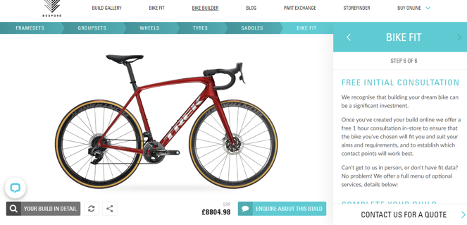How to Build a Product Configurator
So your ecommerce store needs a product configurator—a digital tool that configures 3D models of complex products in real-time. This technology has proven invaluable for retailers looking for a more engaging customer experience and a more streamlined sales process. How do you make it happen?
Key Takeaways
- Product configuration increases the likelihood of sales, offers an upsell opportunity, reduces the rate of product returns, and offers better control over the secondary market.
- Product configurators can be built via spreadsheet or code.
- You can implement a custom configurator through a third party.
- Product configurators are available via turnkey software.
Overview
There are many routes you can take toward incorporating a product configurator, some of which are more effective than others. You might be able to build it yourself, but some jobs are best left to professionals.

There are DIY software options and cloud-based SaaS choices on the market that can help you customize your own product configurator, but it’s important to explore their benefits and drawbacks before making a decision. And it’s just as important to look into what custom development with an experienced partner can bring to your operation.
Let's explore your options.
Building with a Spreadsheet
Spreadsheets are still a go-to in the business world for a reason. They’re incredibly effective and user-friendly for meeting business needs like analyzing data and running numbers, and they can also act as an excellent CPQ solution—up to a point.
A seasoned Excel or Google Sheets pro can definitely build a product configurator that does the math, keeps track of inventory, and is easy to implement. But that’s about as far as even the most complex spreadsheet product configurator gets.
As with everything in business, you get what you pay for when you build a product configurator, and while the spreadsheet option requires little upfront cost, it also has limitations:
- A spreadsheet requires constant upkeep and maintenance, or else data will be inaccurate.
- Spreadsheets are boilerplate and difficult to customize, which can present serious challenges down the road.
- A spreadsheet product configurator won’t integrate to other systems or processes.
The spreadsheet option may suffice for smaller, simpler uses, but if your business deals in anything complex or plans to grow in that direction, a spreadsheet-based product configurator is not a good option.

DIY Product Configurator
If you have an ambitious IT department, there’s always the homegrown coding option. It can be fulfilling and affordable to take on the product configurator development challenge in-house, but it doesn’t stop at the development stage.
- Your staff will need to provide constant maintenance and take on additional duties like system management, end-user testing, and change management.
- While integrations are possible, they’ll be far more difficult and time-consuming than it may be worth.
If you’re 100% confident in your personnel, this may be the right route to take, but be realistic with yourself about the capabilities and efficiency of your IT staff.

Inviting a Third Party
You have the option of bringing a team of experts in to get your product configurator off the ground. This seems like a wise choice, but there are a few considerations to take into account.
- You’re locked in with that team for the lifecycle of your software. If you decide later that you no longer want to work with your original vendor, you’ll have to start over from scratch—and it will likely cost twice as much and include downtime.
- While integrating to other processes and systems will be possible, you’ll likely be spending a lot to make it happen.
If customization is your number one priority and you’re willing to spend the costs to hire a team of experts to build and maintain your product configurator, this might be the right fit.

Using Product Configurator Software
End-to-end product configurator solutions like Threekit have improved by leaps and bounds over the past decade. These SaaS solutions provide flexibility, affordability, seamless integration with ecommerce platforms, and top-tier visualization capabilities that improve the configuration process.
With the AI Visual Discovery tool option, guided selling with stunning visuals and a wealth of customization options is easy to implement for any industry.
The experts at Threekit are also available to provide support when needed. When you choose Threekit solutions for your product configurator, you’re getting the best of all worlds: ease of use, a turnkey solution, and excellent rates.
We understand that building a product configurator is a massive undertaking and want to help you do it right the first time. Our experienced team is prepared to help you find the perfect solution for your unique needs.
We’ve worked with businesses in nearly every ecommerce industry, so you know you’re getting the guidance, support, and tools you need for the best possible product configuration experience.
If you’re ready to get started on your Threekit-supported product configurator, get in touch today.

Download our eBook
If you’re making the business case for 3D and augmented reality product visuals, this is the guide you need. Get real data on how this innovative technology pays off.





